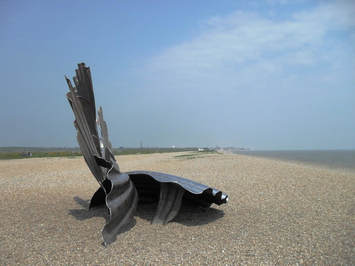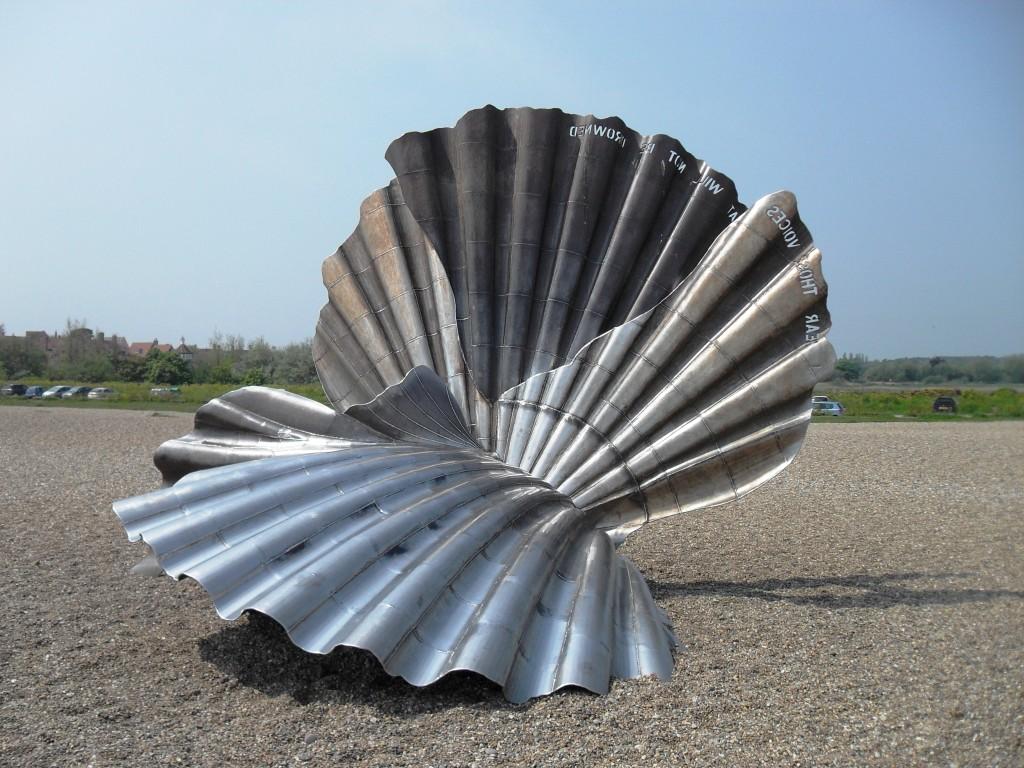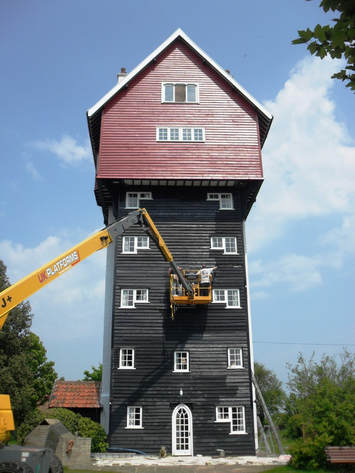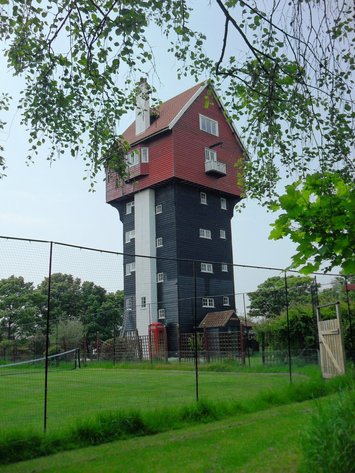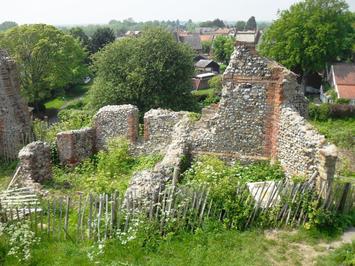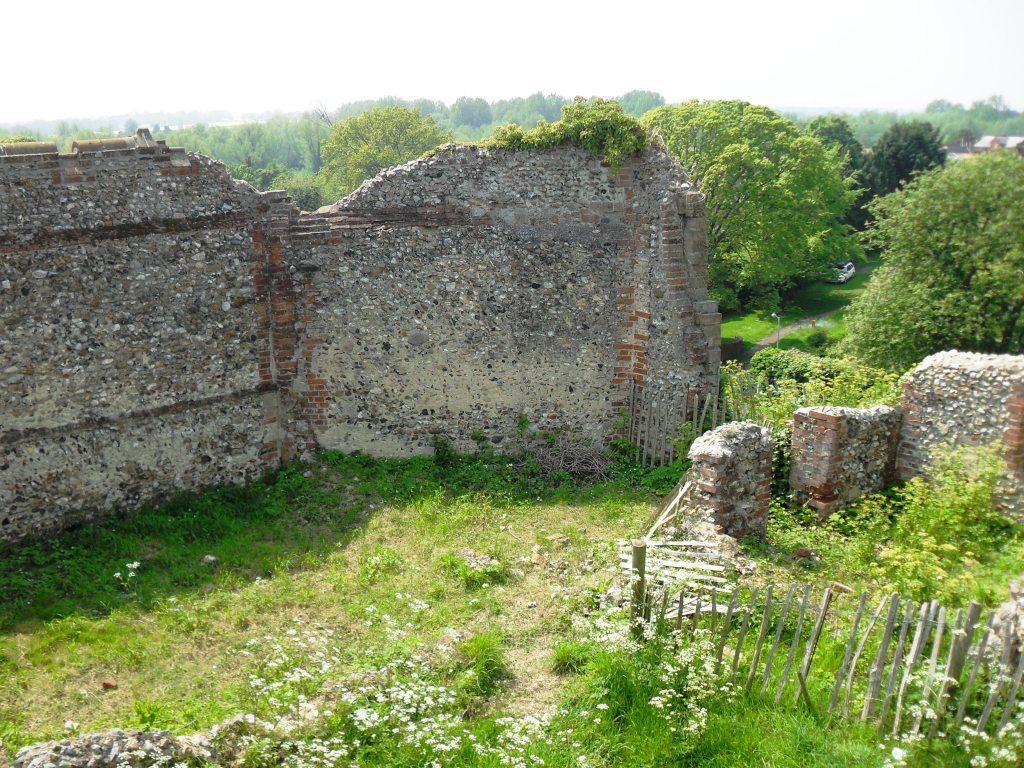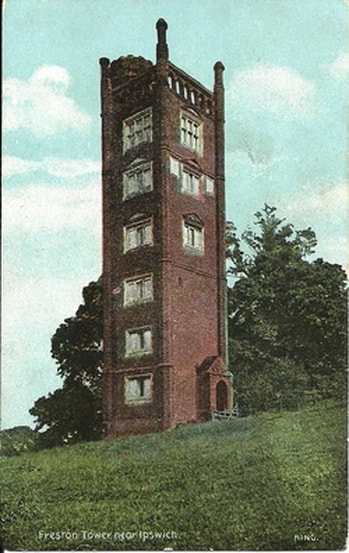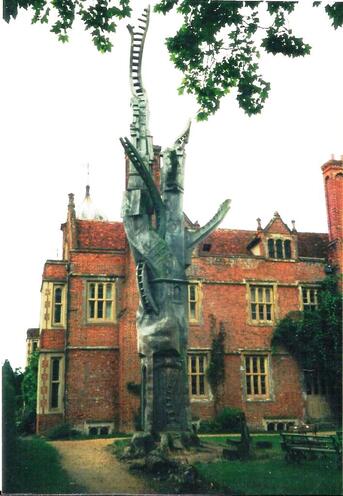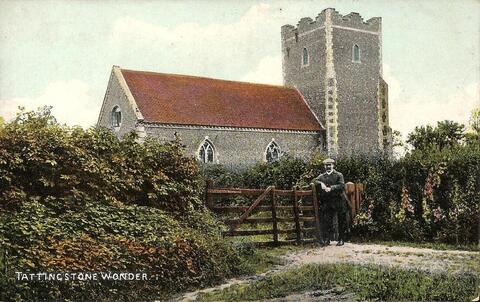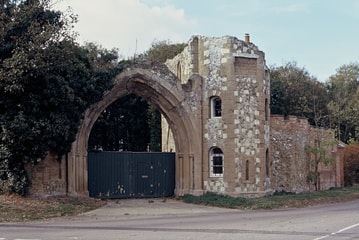Suffolk
ALDEBURGH
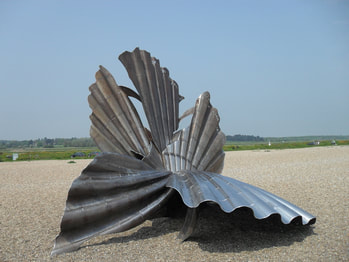
Scallop
Maggi Hambling designed the huge steel scallop shell as a tribute to Benjamin Britten. It was unveiled in 2003.
Date taken: 24/05/2012
Maggi Hambling designed the huge steel scallop shell as a tribute to Benjamin Britten. It was unveiled in 2003.
Date taken: 24/05/2012
ALDEBURGH TM 465 565
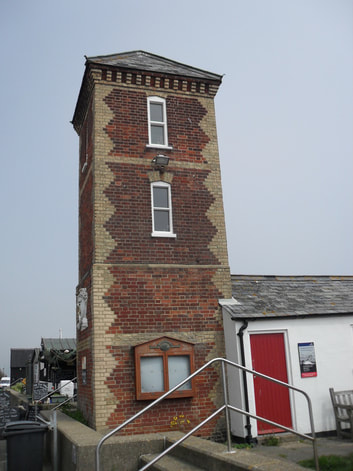
The North Lookout
The pilot and lifeboat station was added in the 20th century.
Date taken: 24/05/2012
The pilot and lifeboat station was added in the 20th century.
Date taken: 24/05/2012
ALDRINGHAM CUM THORPE TM 468 598
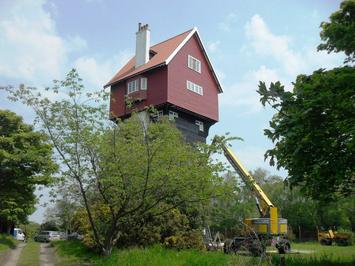
The House in the Clouds
G. Stuart Ogilvie developed the small fishing village of Thorpe into the holiday park of Thorpeness in the early 20th century and in order supply the need for water he installed a water tank. The 60 feet high tower was built as a five-storey dwelling and a mock house concealed the tank.
After an alternative water supply was provided the tank was removed and the tower is now holiday accommodation.
Date taken: 24/05/2012
G. Stuart Ogilvie developed the small fishing village of Thorpe into the holiday park of Thorpeness in the early 20th century and in order supply the need for water he installed a water tank. The 60 feet high tower was built as a five-storey dwelling and a mock house concealed the tank.
After an alternative water supply was provided the tank was removed and the tower is now holiday accommodation.
Date taken: 24/05/2012
ALDRINGHAM CUM THORPE TM 468 598
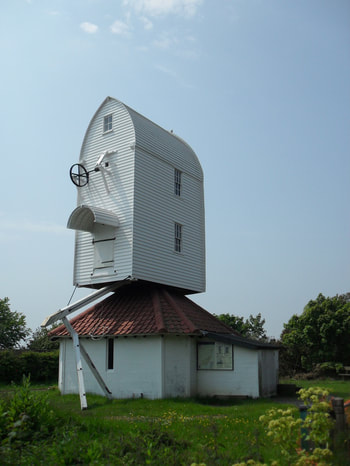
Windmill
The windmill was built in the nearby village in 1803 and moved to its present site, near to The House in the Clouds, in 1923. It was restored in 1976.
Date taken: 24/05/2012
The windmill was built in the nearby village in 1803 and moved to its present site, near to The House in the Clouds, in 1923. It was restored in 1976.
Date taken: 24/05/2012
BURY ST EDMUNDS TL 857 642
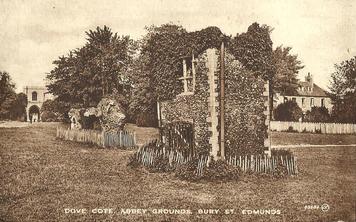
Abbey Dovecote
The two-storey hexagonal dovecote in Abbey Gardens is said to date from the 14th century.
No doubt it would have served as a garden feature in later centuries.
The two-storey hexagonal dovecote in Abbey Gardens is said to date from the 14th century.
No doubt it would have served as a garden feature in later centuries.
EAST BERGHOLT TM 070 344
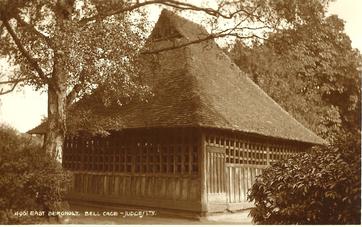
Bell Cage
A temporary wooden bell cage was erected in 1531 after work constructing the church tower ceased. It was moved from the south side to the north side of the church in the 17th century because the resident of Old Hall objected to the noise, but ringers still stand beside the bells as they ring them to this day.
A temporary wooden bell cage was erected in 1531 after work constructing the church tower ceased. It was moved from the south side to the north side of the church in the 17th century because the resident of Old Hall objected to the noise, but ringers still stand beside the bells as they ring them to this day.
ELVEDEN TL 788 776
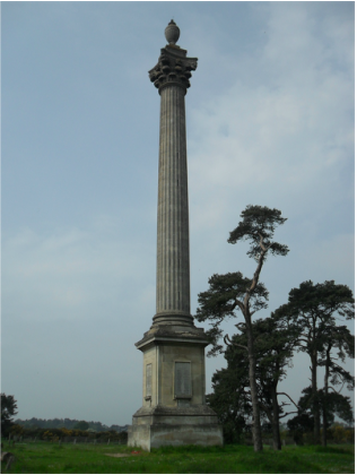
War Memorial
A 113 feet high Corinthian column was designed by Clyde Young in 1921 as a war memorial at the junction of three parishes. The entrance to the 148 steps to the top has been blocked.
Date taken: 23/05/2012
A 113 feet high Corinthian column was designed by Clyde Young in 1921 as a war memorial at the junction of three parishes. The entrance to the 148 steps to the top has been blocked.
Date taken: 23/05/2012
EUSTON TL 904 784
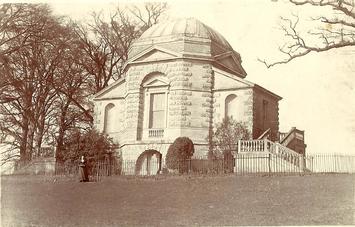
The Temple
In 1746 William Kent designed an octagonal eyecatcher, known as The Temple, as a banqueting house for the 2nd Duke of Grafton. It was Kent's last work.
In 1746 William Kent designed an octagonal eyecatcher, known as The Temple, as a banqueting house for the 2nd Duke of Grafton. It was Kent's last work.
EYE TM 147 738
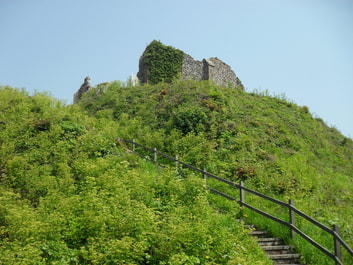
Kerrison's Folly
In 1844, Sir Edward Kerrison demolished a windmill on the castle motte and built a house for his batman who had saved his life at Waterloo in 1815.
In 1965 the building collapsed in a gale.
Date taken: 23/05/2012
In 1844, Sir Edward Kerrison demolished a windmill on the castle motte and built a house for his batman who had saved his life at Waterloo in 1815.
In 1965 the building collapsed in a gale.
Date taken: 23/05/2012
EYE TM 143 741
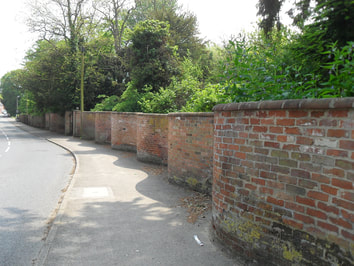
Crinkle Crankle Wall
The late 18th century crinkle crankle wall is at Chandos Lodge, the home from 1957 to 1988 of the late Sir Freddy Ashton, Director of the Royal Ballet.
Compare with the crinkle-crankle wall at
LYMINGTON Hampshire
Date taken: 23/05/2012
The late 18th century crinkle crankle wall is at Chandos Lodge, the home from 1957 to 1988 of the late Sir Freddy Ashton, Director of the Royal Ballet.
Compare with the crinkle-crankle wall at
LYMINGTON Hampshire
Date taken: 23/05/2012
FRESTON TM 177 396
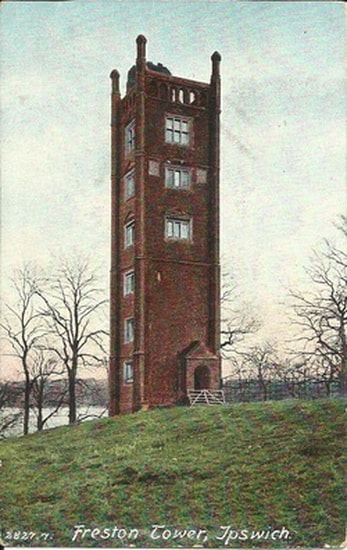
Freston Tower
Freston Tower was built in 1549, possibly for the Latimer family. It is probably an Ipswich merchant's look-out tower having good views of the River Orwell.
There are no windows to the bottom three storeys on the south side, which may mean that it was once attached to another building.
Freston Tower was built in 1549, possibly for the Latimer family. It is probably an Ipswich merchant's look-out tower having good views of the River Orwell.
There are no windows to the bottom three storeys on the south side, which may mean that it was once attached to another building.
ICKWORTH TL 811 609
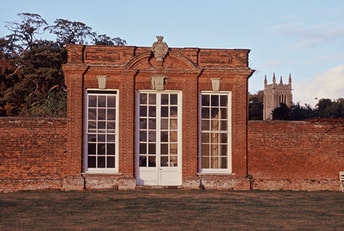
Sir John Hervey's Summerhouse
The summerhouse was built in 1703 for John Hervey (1655-1751) in the grounds of Ickworth Manor House. The Manor House was demolished in about 1710.
Date taken: 07/11/2003
The summerhouse was built in 1703 for John Hervey (1655-1751) in the grounds of Ickworth Manor House. The Manor House was demolished in about 1710.
Date taken: 07/11/2003
ICKWORTH
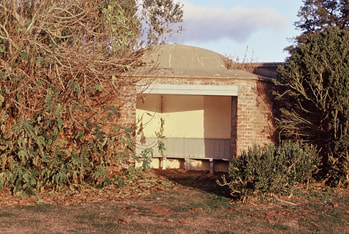
Garden seat
Date taken: 07/11/2003
Date taken: 07/11/2003
LITTLE SAXHAM TL 796 622
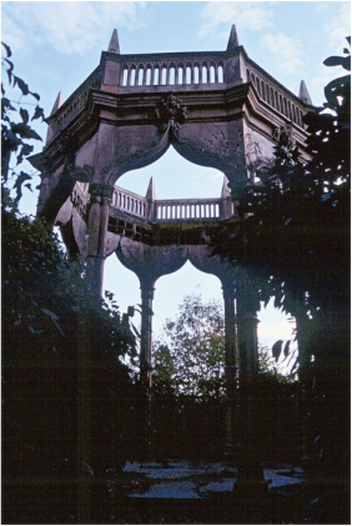
Umbrello
The Umbrello is made of Coade stone and marked
COADE & SEALY/LAMBETH.
Date taken: 07/11/2003
The Umbrello is made of Coade stone and marked
COADE & SEALY/LAMBETH.
Date taken: 07/11/2003
LONG MELFORD TL 860 478
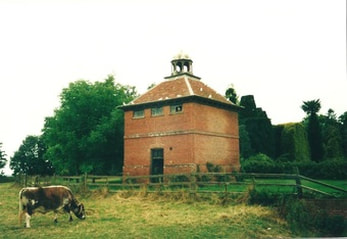
Kentwell Hall Dovecote
The 18th century Dovecote at Melford Hall is said to be the largest in Suffolk. Internally, it has about 144 nesting boxes on each wall and a revolving access ladder.
The 18th century Dovecote at Melford Hall is said to be the largest in Suffolk. Internally, it has about 144 nesting boxes on each wall and a revolving access ladder.
LONG MELFORD TL 863 479
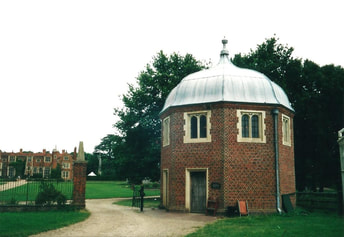
Kentwell Hall Pavilions
The Pavilions at Kentwell Hall were built in 1992/93 as the final part of a new gate screen.
The Pavilions at Kentwell Hall were built in 1992/93 as the final part of a new gate screen.
LONG MELFORD TL 863 479
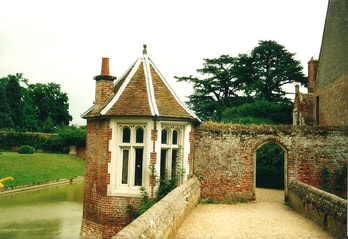
Camera Obscura
A gazebo at the corner of the moat at Kentwell Hall has been made into a camera obscura.
A gazebo at the corner of the moat at Kentwell Hall has been made into a camera obscura.
LONG MELFORD
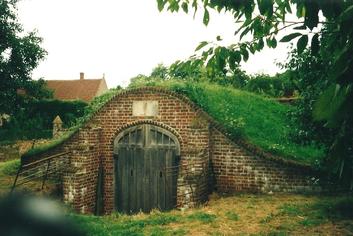
Icehouse
The icehouse at Kentwell Hall had been filled in and was excavated in 1997 and rebuilt in 2000.
The icehouse at Kentwell Hall had been filled in and was excavated in 1997 and rebuilt in 2000.
LONG MELFORD
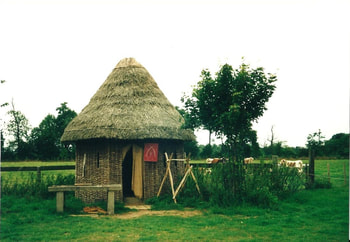
Archery Hut
Kentwell Hall
Kentwell Hall
LONG MELFORD TL 863 479
|
Tower of Babel
A cedar on Cedar Lawn at Kentwell House was partly damaged in the great hurricane of 1987 and again in the great storm of 1990. In 1999, Colin Wilbourn worked for four months to create the Tower of Babel. Colin Wilbourn made other tree sculptures at: DURHAM, The Upper Room (gone) North Riding,EAST AYTON,The Magicians Coat (gone) West Riding, HUDDERSFIELD, Greenhead Park West Riding, KNARESBOROUGH, Henshaws |
LONG MELFORD TL 865 464
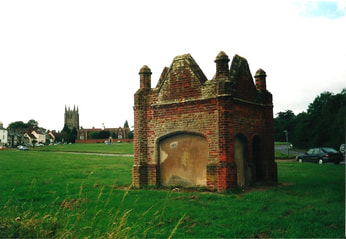
Water Conduit
The 16th century water conduit on the village green at Long Melford was built at the same time as Melford Hall and in a similar style.
The 16th century water conduit on the village green at Long Melford was built at the same time as Melford Hall and in a similar style.
LONG MELFORD TL 865 462
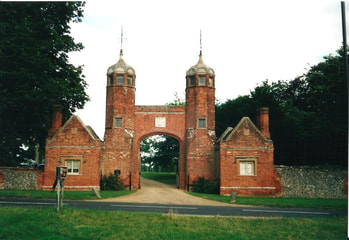
Melford Hall Gate House
The Gate House to Melford Hall was built in about 1559 and the two lodges added in the 19th century.
The Gate House to Melford Hall was built in about 1559 and the two lodges added in the 19th century.
LONG MELFORD TL 865 462
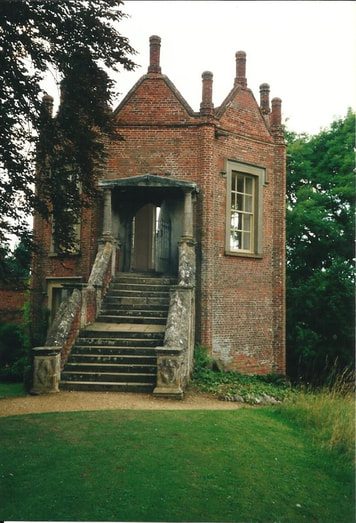
The Octagon
The Octagon at Melford Hall was a banqueting pavilion that dates back to the early 17th century when it contained a marble table and five giltwood chairs.
The panelling and sash-windows were installed in the 18th century.
The Octagon at Melford Hall was a banqueting pavilion that dates back to the early 17th century when it contained a marble table and five giltwood chairs.
The panelling and sash-windows were installed in the 18th century.
TATTINGSTONE TM 139 362
|
Tattingstone Wonder
In about 1790, Squire White of Tattingstone Place had two cottages extended to three and embellished to resemble the nave and tower of a church. It can be seen from Tattingstone Place and formed part of a landscaped park. Tradition has it that Squire White said, 'People wonder at nothing, so I will give them something to wonder about'. |
TUNSTALL TM 349 540
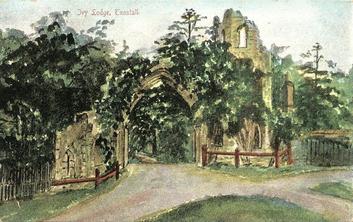
Ivy Lodge
Ivy Lodge was built in 1790 as a mock Romanesque gatehouse to Rendlesham Hall. It was built for Lord Rendlesham and the stone is said to have come from the ruins of Butley Abbey.
Rendlesham Hall was demolished in 1949.
Ivy Lodge was built in 1790 as a mock Romanesque gatehouse to Rendlesham Hall. It was built for Lord Rendlesham and the stone is said to have come from the ruins of Butley Abbey.
Rendlesham Hall was demolished in 1949.
